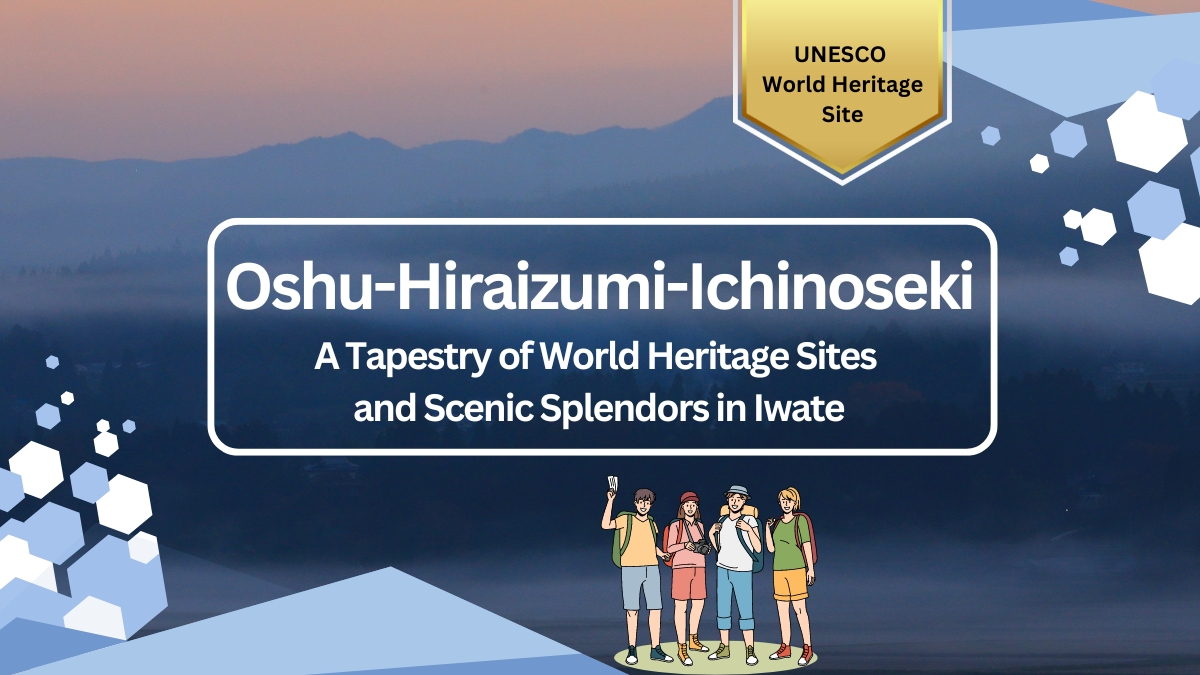Located in the southern part of Iwate Prefecture, the Oshu-Hiraizumi-Ichinoseki area is a vibrant destination where visitors can enjoy a rich blend of cultural heritage and natural beauty. This region is particularly famous for its World Heritage sites and scenic landscapes, making it a popular spot for both history enthusiasts and nature lovers.
Genbikei Gorge(厳美渓)
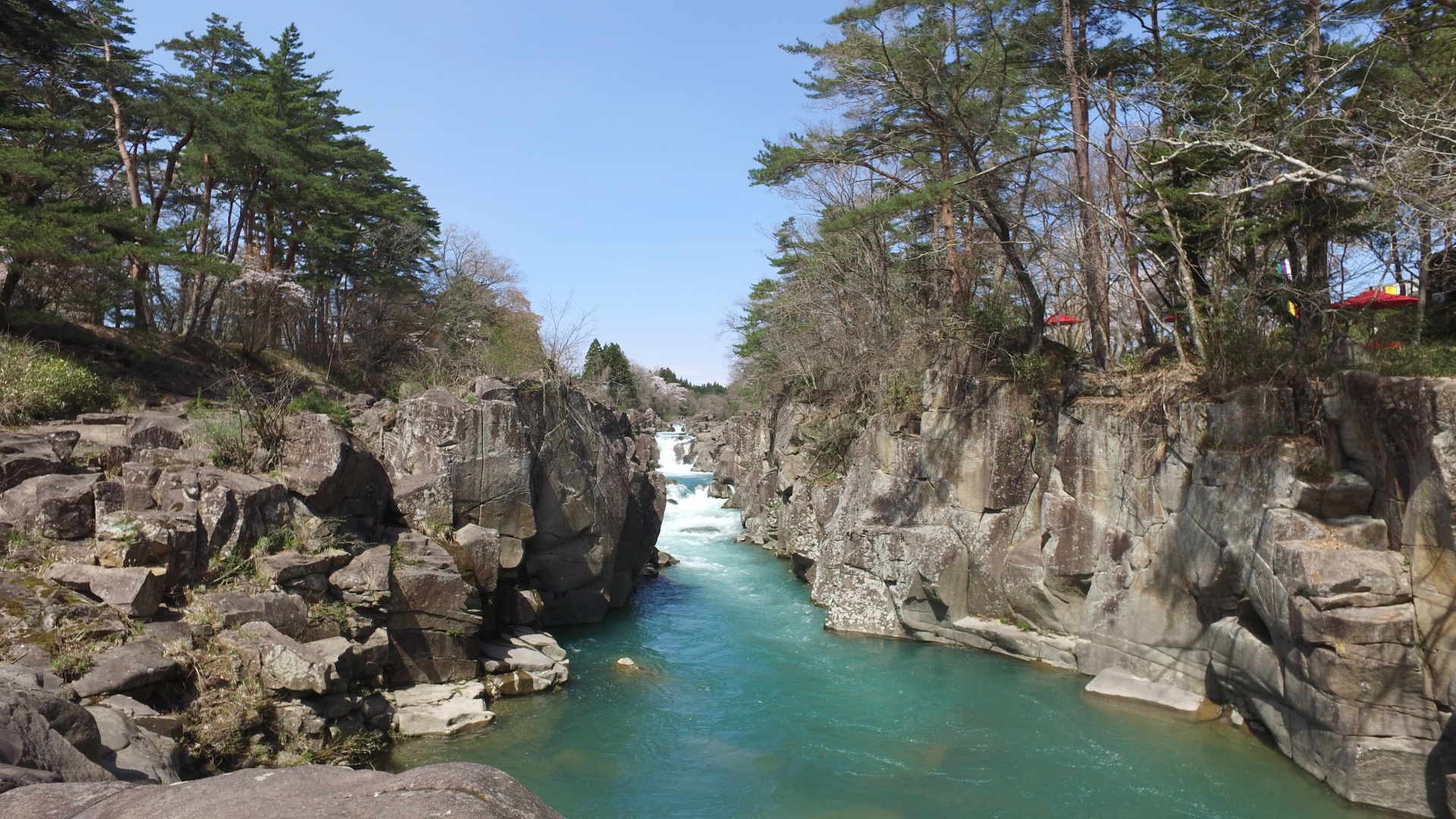
Genbikei Gorge offers a serene escape into nature along the banks of the Iwai River, which originates from Mount Kurikoma. This scenic gorge is shaped by the river’s erosion, creating a stunning landscape of strange rocks, deep abysses, and cascading waterfalls, extending over a 2-kilometer stretch.
Visitors can choose from two main walking routes. The first, a gentle 30-minute stroll downstream, is enveloped by the soothing sounds of flowing water and the sight of emerald green waters—a truly relaxing atmosphere. For those seeking a more rugged experience, the 70-minute upstream path is recommended. This route offers a chance to see unique geological formations such as potholes—rounded cavities formed by pebbles swirling in the river’s current.
A highlight of Genbikei Gorge is the famous “flying dango” (kakkou dango). At a rest house, visitors place money in a basket and strike a wooden mallet. The basket is then sent via cable across the river to a shop on the opposite side. After being filled with dango (sweet dumplings) and tea, the basket returns, making for a unique and enjoyable experience.
With easy access from the city, Genbikei Gorge is a convenient stop near other attractions like Geibikei Gorge. This national scenic and natural monument features a blend of dynamic and serene landscapes, attracting over a million visitors each year. The flying dango, available year-round, adds a delightful touch to the visit, alongside a cafe offering a rich menu of coffee and sweets.
For an added adventure, the only suspension bridge in the area, Goranba Bridge, sways gently with each step. In spring, the cherry trees planted by Lord Date Masamune of Sendai bloom beautifully, enhancing the already picturesque setting. Just an 8-minute drive from Ichinoseki IC and about 20 minutes from JR Ichinoseki station, Genbikei Gorge is not only a symbol of nature’s enduring beauty but also a testament to the geological history that has shaped it over millions of years.
Geibikei Gorge(猊鼻渓舟下り)
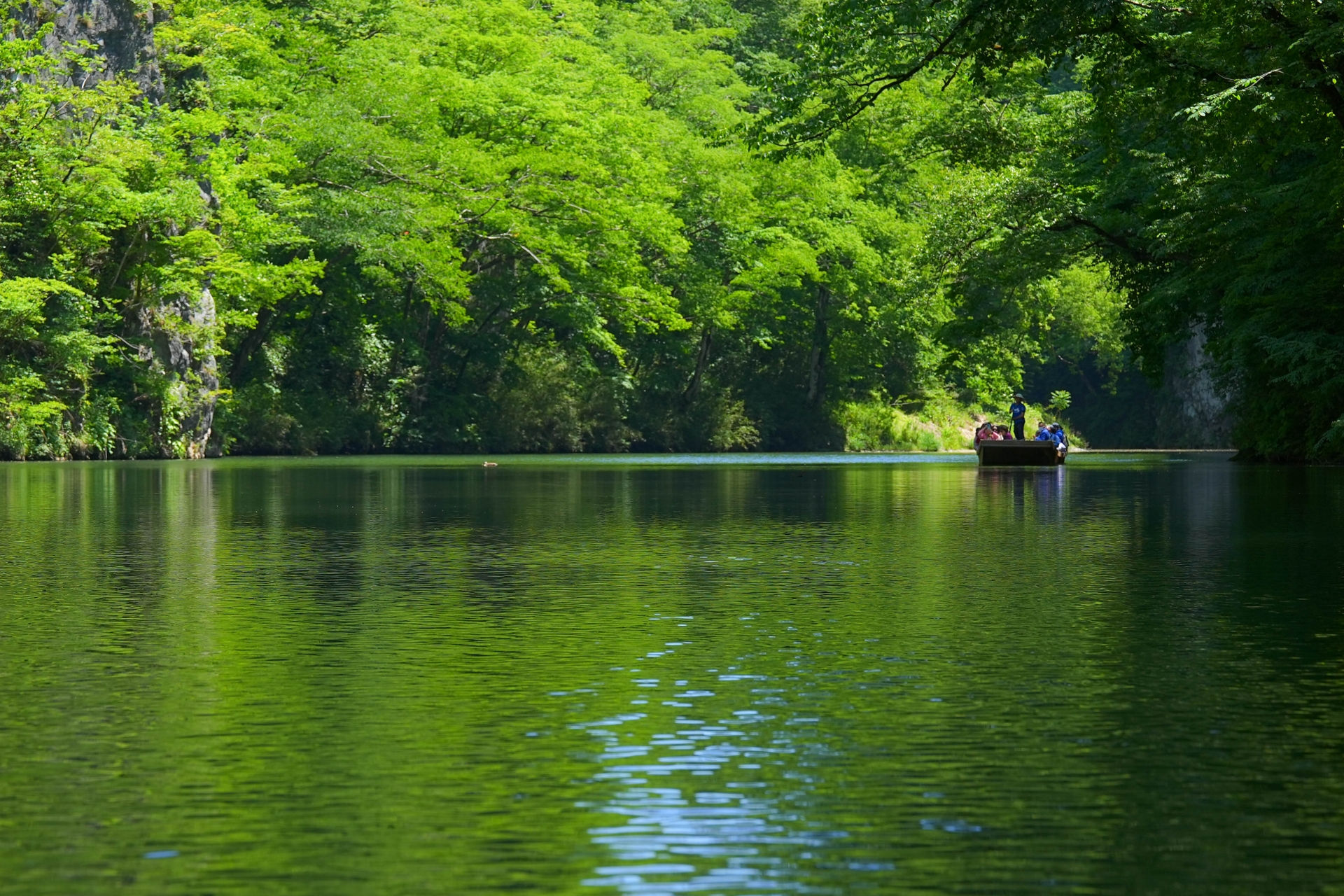
Geibikei Gorge, located in Iwate Prefecture in the Tohoku region of Japan, offers a breathtaking journey through more than a century of natural history. Unique to this site is the traditional boat ride, where boatmen navigate solely using a single pole—without any engine. This serene ride allows visitors to immerse themselves in the seasonal beauties of Japan.
As you float along the gorge, enjoy the traditional pleasures of Japanese cuisine right on the boat. Delight in succulent grilled ayu (a type of river fish), cooked slowly over charcoal, and colorful bento boxes packed with an assortment of Japanese ingredients. In winter, warm up with a special hot pot, all while being gently rocked by the waters and taking in the scenic views.
At the halfway point of the boat ride, visitors have a chance to engage in a unique local tradition: “wishing spheres.” Throw these spheres, engraved with words like “fortune,” “longevity,” and “happiness,” into a hole on the large Geibikei Rock. If your sphere makes it in, your wish is said to come true.
Adding to the ambiance is the “Geibi Oiwake,” a type of traditional Japanese folk song performed by the boatmen. Toward the end of the ride, be captivated by their beautiful singing, enhancing the already picturesque and culturally rich experience.
The boats used for the tours are handcrafted by the boatmen themselves, who are also skilled carpenters. Made from domestic cedar, these wooden boats take about a month to construct and carry on the tradition of the “uma-watashi-bune,” flat-fronted boats historically used for transporting horses.
The entire boat excursion lasts about 90 minutes, with a 20-minute stop at Miyoshigaoka for leisurely walks and the throwing of wishing spheres. The gorge operates daily, weather permitting, with additional boats available during peak times to accommodate visitors. This timeless journey through Geibikei Gorge is an unforgettable way to experience Japan’s rich cultural and natural heritage.
Golden Hall of Chusonji Temple(中尊寺)
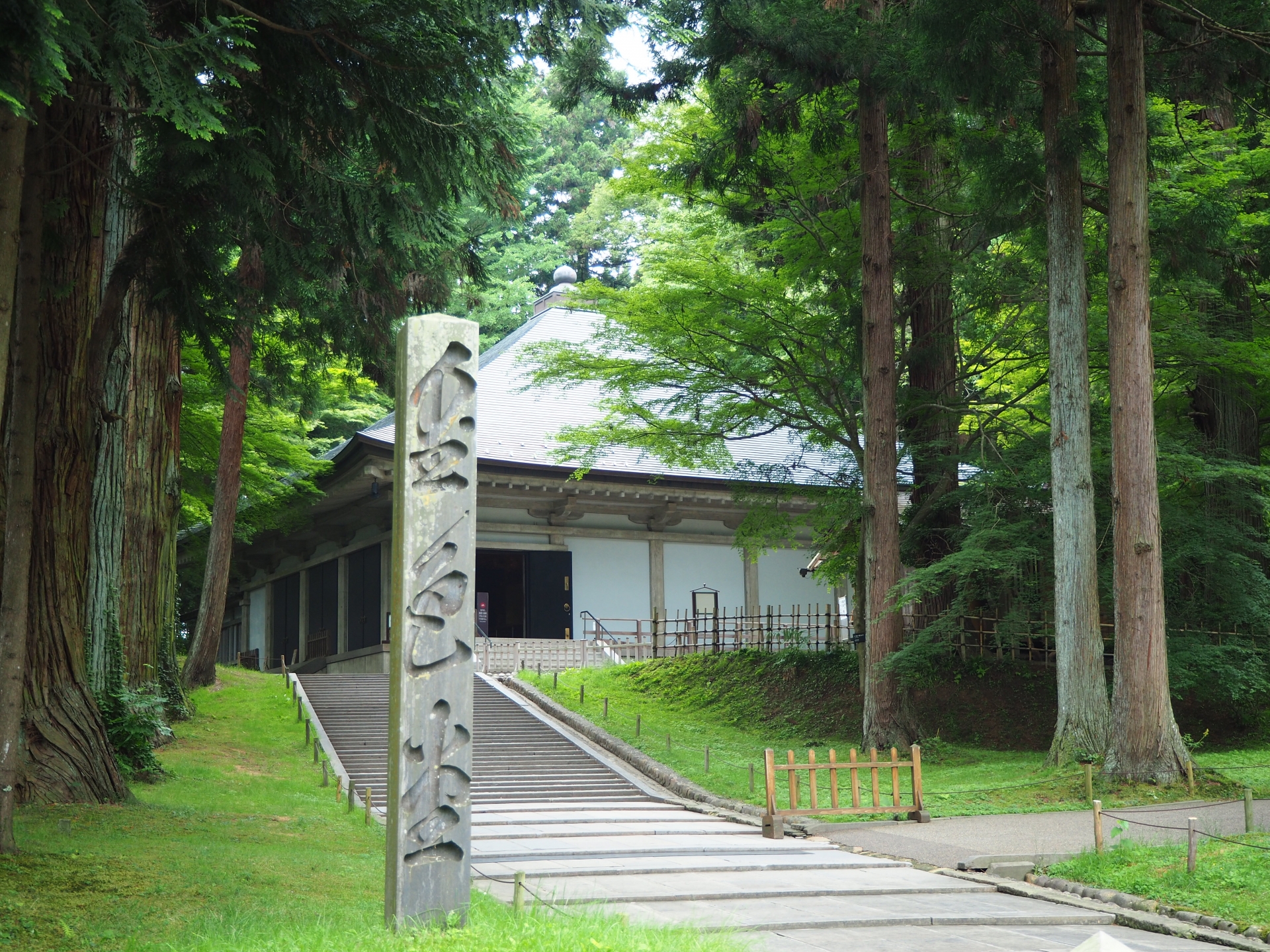
Chusonji Temple, nestled in Iwate Prefecture within Japan’s Tohoku region, was established in 850 by the prominent monk Ennin (Jikaku Daishi), originally from Enryakuji Temple on Mount Hiei. The temple experienced significant expansion in the early 12th century under the patronage of Kiyohira, the first of the Oshu Fujiwara lords, who intended to soothe the souls of all beings—friend and foe alike—lost in the conflicts that plagued northeastern Japan in the late 11th century.
Kiyohira’s construction of Chusonji aimed to establish a Buddhist “Pure Land” — a peaceful utopia guided by Buddhist principles — in the northern “Michinoku” region, marked by his profound commitment to peace after losing family members in civil strife. He began the monumental task in 1105, constructing a pagoda at the heart of the Tohoku region and creating multiple buildings, including the Tahoto Pagoda and the Shakado Hall, housing over a hundred statues of Shakyamuni Buddha.
This sacred complex, including teachings from the Lotus Sutra, represents a significant physical manifestation of the sutra’s scenes, where a great jeweled stupa appears before Shakyamuni as he expounds the sutra, symbolizing the universal access to enlightenment. Chusonji was built according to the Tendai sect, incorporating teachings from Pure Land Buddhism and Esoteric Buddhism, and at its peak, it comprised forty temple buildings and three hundred monks’ quarters, as documented in the historical record “Azuma Kagami.”
The successive generations—Kiyohira’s son Motohira, and grandson Hidehira, who invited the famous warrior Minamoto no Yoshitsune to the region—continued his legacy, constructing temples dedicated to various Buddhas representing past, present, and future. Chusonji flourished for nearly a century, known as the peaceful “Hiraizumi Era,” free from warfare, until the political upheaval led by the rival Minamoto clan brought about the Oshu Fujiwara’s demise in 1189.
Despite suffering decline and destruction, including a significant fire in 1337, Chusonji has preserved its cultural heritage across various fields, including architecture, painting, calligraphy, and sculpture. It is renowned as one of eastern Japan’s greatest repositories of Heian-period Buddhist art. In 2011, Chusonji, along with other cultural assets of Hiraizumi, was designated a UNESCO World Heritage Site.
The temple’s most celebrated feature, the Konjikido (Golden Hall), erected in 1124 by Kiyohira, remains a masterpiece of the era’s craft, resplendently adorned with gold leaf and mother-of-pearl inlays from the Silk Road, embodying the Pure Land in physical form. This hall, alongside the temple’s vast array of relics, continues to tell the tale of a region shaped by profound loss and the redemptive power of faith.
Visitors to Chusonji can ascend Tsukimizaka, the historical approach leading to the temple complex, flanked by ancient cedars planted during the Edo period by the Date clan. This path offers breathtaking views of the surrounding landscape and insight into the region’s storied past. At Chusonji, one can truly experience the spiritual and artistic zenith of the Heian period, immortalized in the tranquility and beauty of its sacred grounds.
https://www.chusonji.or.jp/know/index.html
Motsuji Temple(毛越寺)
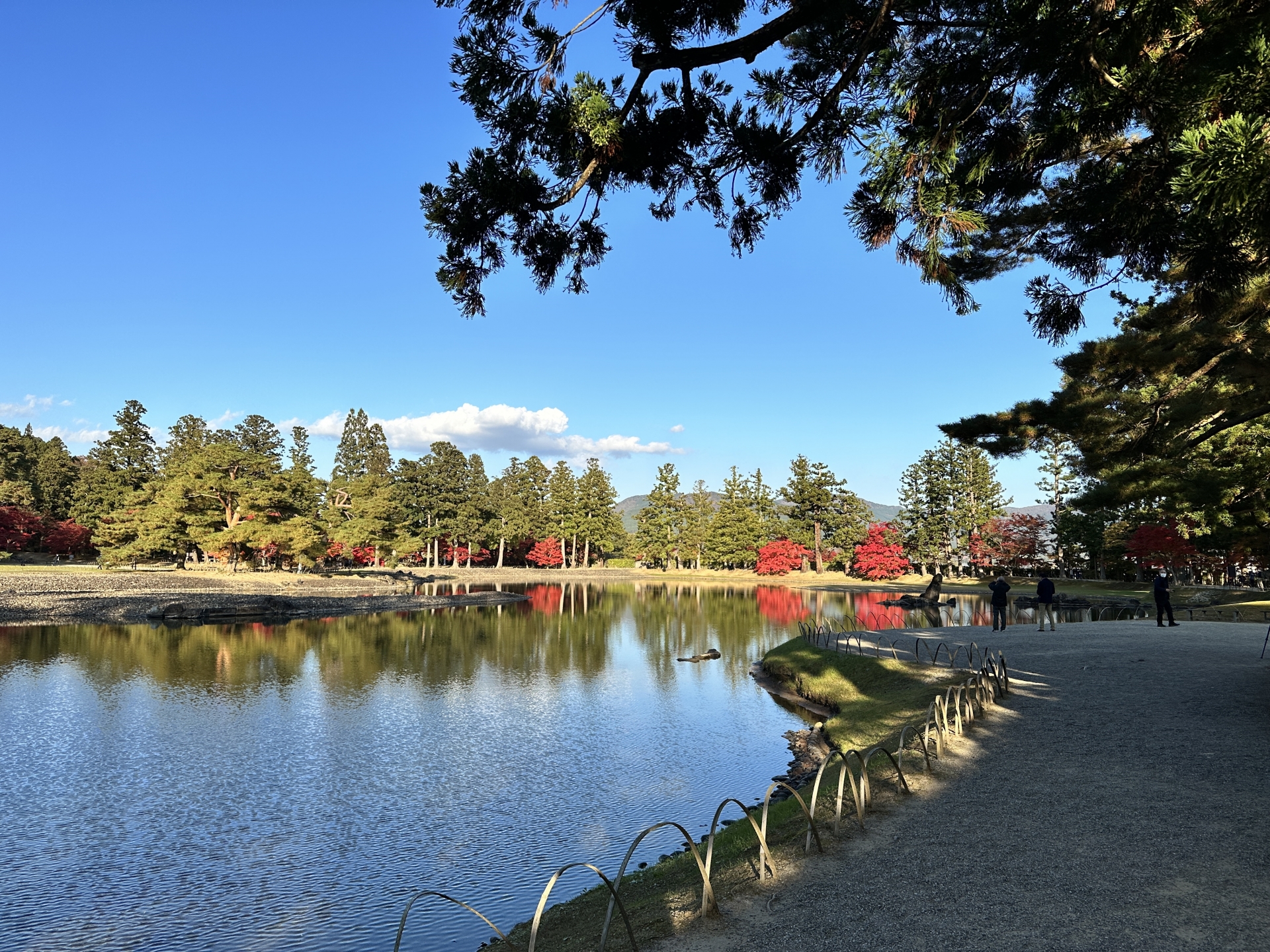
Motsuji Temple, a designated Special Historic Site and Special Place of Scenic Beauty in Japan, is renowned for its Pure Land garden, representing the Buddhist vision of paradise. This temple was founded by the high priest Ennin, known as Jikaku Daishi, and saw significant development from the second to the third generation of the Fujiwara clan in the region, particularly under Motohira and Hidehira. Once rivaling the grandeur of Chusonji Temple with 40 temple buildings and 500 monk quarters, Motsuji faced numerous disasters over the centuries, leading to the loss of all original structures. However, the Heian period garden and architectural remains have been meticulously preserved around the central Oizumi Pond, reflecting the site’s profound historical and cultural value.
The creator of the garden remains unknown, but the design reflects a deep familiarity with the Sakuteiki, an ancient Japanese gardening manual. The garden’s layout centers around a large pond with islands and peninsulas that create intricate views and perspectives, emulating the natural beauty of seascapes and mountain vistas. One of the highlights is the ruggedly styled peninsula on the southeast shore, where a tall, angled standing stone beautifully anchors the expansive view across the water.
Visitors to Motsuji can enjoy the garden year-round from 8:30 AM to 5:00 PM, with hours adjusting in winter to close at 4:30 PM. The temple’s origin is linked to the enchanting White Deer legend, where Ennin established the temple at the behest of a divine old man, believed to be an incarnation of the Healing Buddha, after following mysterious white deer fur through a fog.
Today, Motsuji not only offers a glimpse into the architectural and spiritual endeavors of the past but also provides a peaceful retreat from modern life with Zen meditation experiences available for visitors. These sessions, lasting 60 minutes, are open to groups of 10 to 80 people, providing a chance to calm the mind and enhance focus, with special rates for students and adults.
This exquisite garden, with its profound historical layers and serene setting, invites visitors to step back in time and experience the spiritual legacy of Japan’s Heian period.
https://www.motsuji.or.jp/about/index.html
Muryoko-in Ato(無量光院跡)
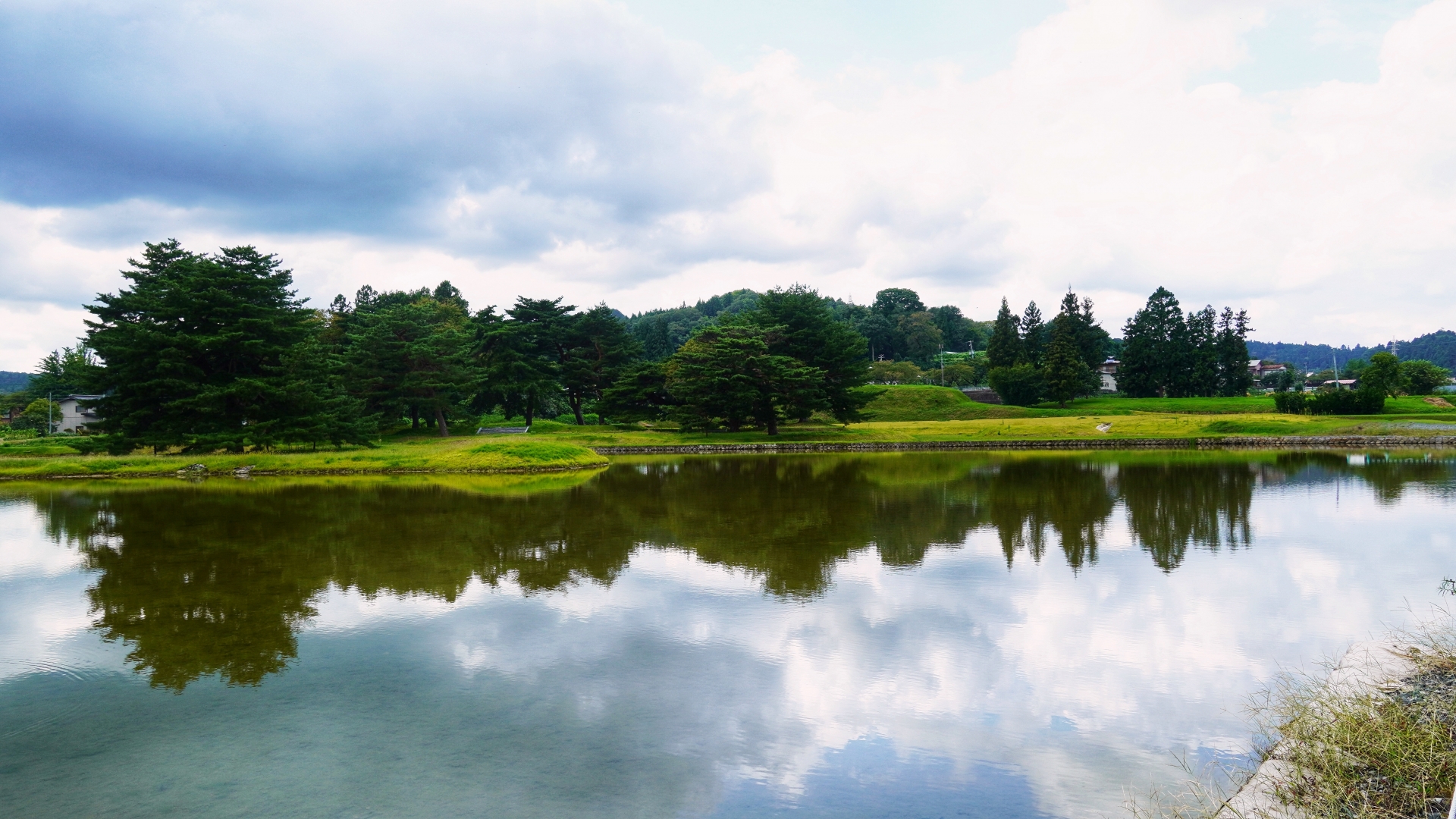
The cultural heritage of Hiraizumi features the ruins of Muryoko-in, a grand temple constructed by the third lord of the Oshu Fujiwara clan, Hidehira, inspired by the Byodo-in Temple’s Phoenix Hall in Uji. The architectural ambition to surpass the Byodo-in is evident in the larger dimensions of the Amida Hall and its flanking corridors compared to the original Phoenix Hall. Central to the layout of Muryoko-in was its alignment with Mount Kinkei to the west, envisioned to capture the descending sun along its ridge, symbolizing the Pure Land, making this site renowned as a masterpiece of Pure Land garden design.
Muryoko-in consisted of an Amida Hall, mimicking the Phoenix Hall, and was surrounded by a structured garden with a central pond, reflecting the pure land of Buddhist cosmology. After the fall of the Oshu Fujiwara, the temple complex fell into ruin and the pond was eventually converted into rice paddies, yet the ruins have been well-preserved.
The World Heritage Committee has highly praised Hiraizumi’s Pure Land gardens, of which Muryoko-in is considered the culmination. The strategic placement of the Buddha Hall in relation to the pond, the wooded areas, and the peak of Mount Kinkei exemplifies the physical realization of an idealized paradise landscape, earning Muryoko-in its esteemed status in the context of Japan’s cultural heritage.
Himemachifudō-dō(姫待不動堂)
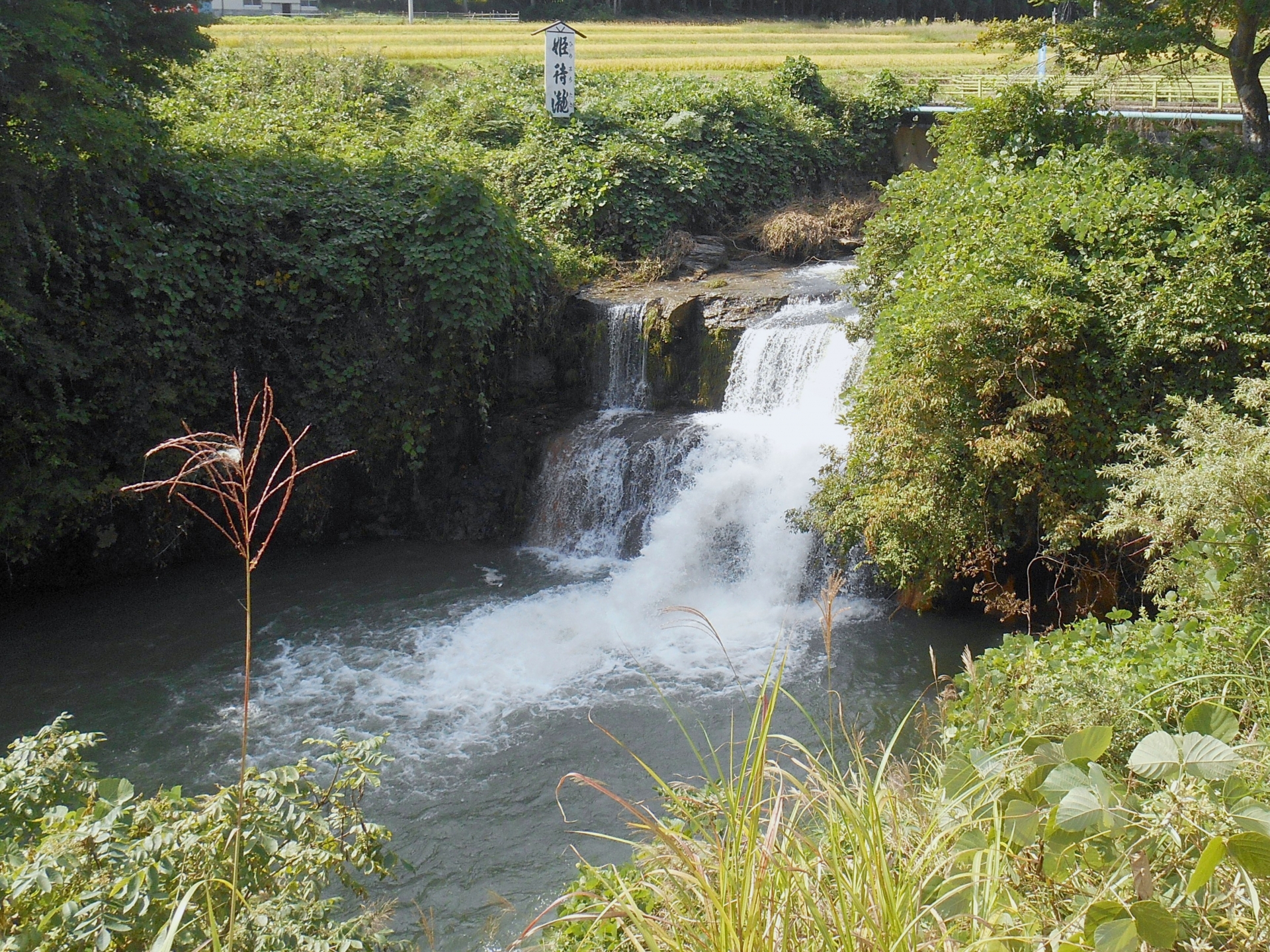
Located near the Hime-machi Waterfall in Hiraizumi, the Hime-machi Fudo Hall holds a fascinating legend that dates back to the Heian period. The temple is deeply connected to the story of the Emishi leader, known as Ajiro-ō, or the “Evil Road King,” who is said to have kidnapped a princess and held her captive in an area called “Kago-hime.” He enjoyed cherry blossom viewing with the princess at “Sakurano,” but she eventually attempted to escape.
The princess’s escape led her to the waterfall now known as Hime-machi Waterfall, where she was unfortunately recaptured. This waterfall, characterized by its striking and graceful flow along the main stream of the Ota River in Hiraizumi, is named after this legend, suggesting a place where the princess waited in ambush during her flight.
In the aftermath of Ajiro-ō’s defeat by the imperial general Sakanoue no Tamuramaro, the wise master Chisho Daishi enshrined a Joroku (life-sized) statue of Fudo Myo-o at this waterfall, making it a site of spiritual significance. The temple was later gloriously reconstructed by Fujiwara no Motohira and, after several deteriorations, was downsized and rebuilt in its current location in 1789 near the Takkoku Cave, maintaining its traditional thatched roof design in the one-story treasure-house style.
The main statue, a Joroku Fudo Myo-o, is carved from Katsura wood, dating back to the Fujiwara period, and is a designated cultural property of Iwate Prefecture since 1975. The temple continues to be managed by Takkoku Seikouji Temple of the Tendai sect, which has long overseen the rites here.
Worshippers and visitors often seek blessings at this temple for protection against fire and eye diseases, and it is believed that visiting here can fulfill a great vow once in a lifetime. This site, enveloped in legend and natural beauty, offers a unique glimpse into the historical and spiritual landscape of ancient Japan.
Takkoku-no-iwaya bishamondō(達谷窟毘沙門堂)

Located in the historically rich region of Hiraizumi, the Kukai Bishamondo, or Bishamon Cave Hall, stands as a testament to Japan’s deep historical and spiritual roots, stretching back over 1,200 years. This site was originally a stronghold for the Emishi leaders such as Akuto, Takamaru, and the notorious Ajiro-ō, who caused turmoil in the region by kidnapping women and children and harassing the local populace. Unable to suppress these rebellions, Emperor Kanmu appointed Sakanoue no Tamuramaro as the Seii Taishogun (Generalissimo) to quell the disturbances.
After fierce battles in the year 801, Tamuramaro decisively defeated the Emishi leaders, beheading Ajiro-ō and his cohorts. In gratitude for his military success, attributed to divine protection from Bishamonten, Tamuramaro constructed a temple modeled after Kyoto’s Kiyomizu-dera, dedicated to Bishamonten with 108 statues, making it a place of prayer for national protection.
The site saw continuous support and expansion through various historical periods, including donations from figures such as Minamoto no Yoriyoshi and Yoriie during military campaigns, and substantial contributions from the Northern Fujiwara lords, who built a seven-hall temple complex. Notably, Minamoto no Yoritomo visited the temple in 1189, a journey documented in the “Azuma Kagami.”
Despite suffering from repeated fires and wars, including a significant reconstruction by Date Masamune in 1615, the temple remained a central place of worship and was rebuilt in its fifth iteration in 1976 after another fire. The main sanctuary now houses sacred icons donated by the Date family in the 17th century, including a statue of Bishamonten believed to have been crafted by the revered monk Ennin himself.
The temple complex also features the Benzaitendo Hall, located at the former site of the Gemaga Pond. Originally identified by Ennin during his pilgrimage, this pond was believed to be inhabited by a greedy deity disguised as a five-colored toad. Ennin captured the spirit and enshrined it in the hall, which was last reconstructed in 1989 following a fire.
Among the notable structures is the Hime Machi Fudo Hall, dedicated to a princess kidnapped by the Emishi and later enshrined by Fujiwara no Motohira. This hall, containing a rare wooden statue of Fudo Myoo from the late Heian period, emphasizes the cultural depth and the ongoing reverence for this sacred site.
Kukai Bishamondo is not only a historical site but also a spiritual destination that continues to attract pilgrims and tourists alike, drawn by its rich history and beautiful, tranquil setting. Accessible by car or taxi from nearby stations, it offers a unique glimpse into the spiritual heritage of Japan’s northeastern region.
Sukawa Kougen Onsen(須川高原温泉)
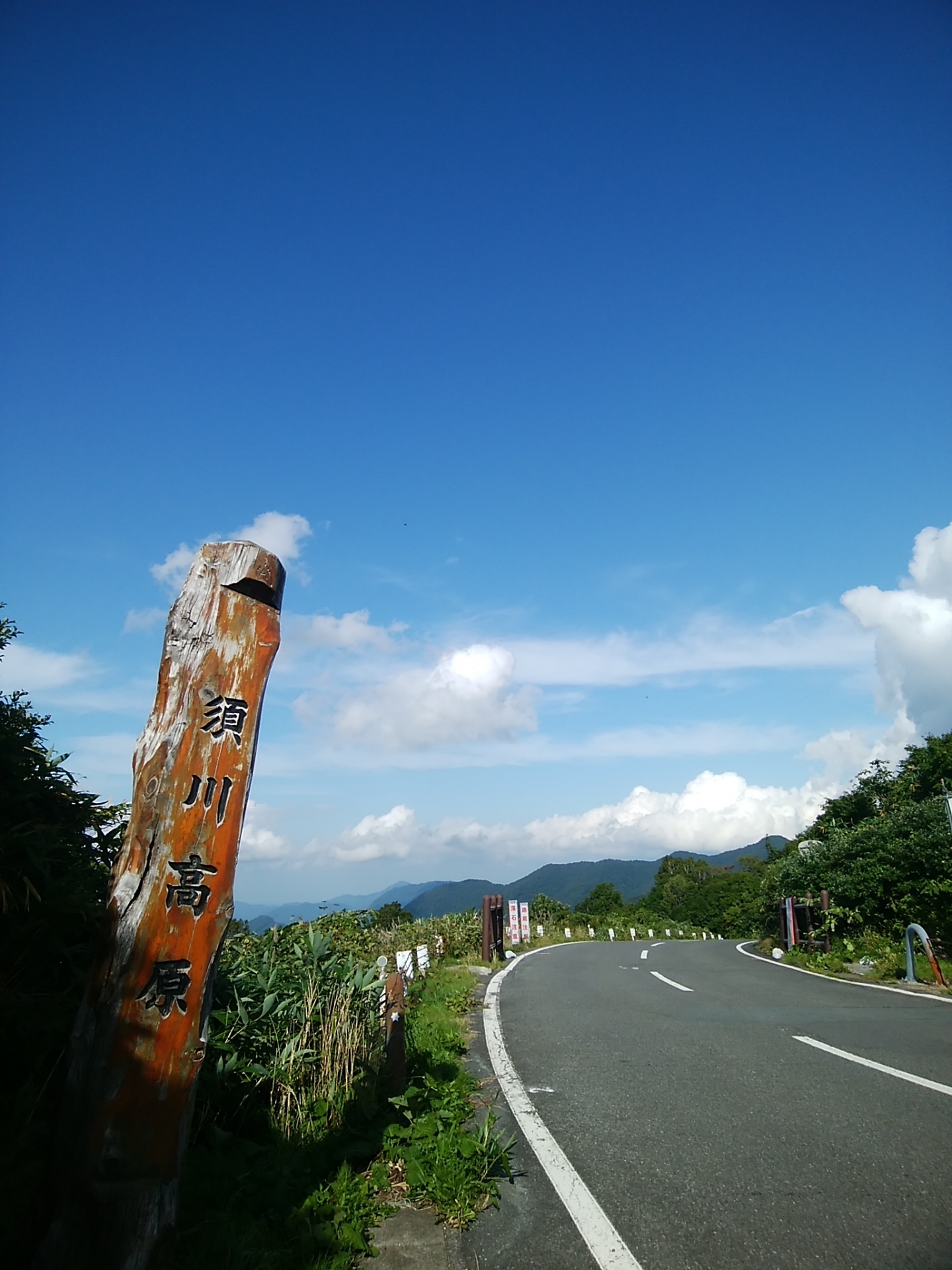
Nestled in the scenic landscapes of Tohoku, Sukawa Kogen Onsen is a remarkable hot spring destination that offers an unparalleled experience set against the majestic mountains of northeastern Japan. Although not yet a well-known spot for tourists from the Kanto region, largely due to limited bus connections from Ichinoseki, this onsen stands out for its grand scale and unique setting.
Upon reaching the last bus stop at Sukawa Kogen Onsen, visitors are greeted by the expansive views of the mountains paired with the impressive hot spring facilities. The area around the ryokan (traditional Japanese inn) showcases an extraordinary natural occurrence, where hot springs erupt from the ground, forming waterfalls of steaming water that even overflow into the drainage ditches. With a prodigious flow of 6,000 liters per minute, these springs are among the most voluminous in Japan.
The therapeutic landscape continues behind the lodging, where visitors can experience steam baths in simple huts, laying on straw mats while applying the healing vapors directly to areas of the body needing relief. This traditional form of bath therapy, known as “yumomi,” is a practice that continues to thrive here.
The ryokan operates seasonally from May to October, during which it becomes a favored retreat for many locals eager to enjoy the healing properties of the springs. A popular hiking route from the lodging to the summit of Mount Kurikoma takes about two hours to cover approximately 4 kilometers, offering spectacular views and, in July, the chance to wander through fields of rhododendrons and moss phlox.
In 2009, the facility underwent renovations to enhance its offerings, including the addition of modern showers and a sauna. Located at an elevation of 1,126 meters, Sukawa Kogen Onsen has been cherished since the Edo period as one of the Michinoku region’s finest hot springs. The water here is a rare strongly acidic sulfur spring, historically sought after for its therapeutic benefits. Visitors can enjoy a vast outdoor bath amidst the grandeur of nature and a unique “oiran-bath” (steam bath), recommended for an authentic onsen experience. For those staying longer for health treatments, self-catering accommodations are available, allowing a deeply immersive onsen experience.
Here’s how you can access Sukawa Kogen Onsen from the nearby areas:
From Ichinoseki Station: The easiest way to reach Sukawa Kogen Onsen is by car, which takes about 10 minutes from Ichinoseki Interchange.
From Hiraizumi/Maezawa Interchange: The drive takes approximately 15 minutes.
From Hiraizumi Smart Interchange: It also takes about 10 minutes by car.
By public transport, visitors can take a taxi from JR Hiraizumi Station, which will take around 10 minutes to reach Sukawa Kogen Onsen.
Yanagi-no-Gosho(柳之御所遺跡)
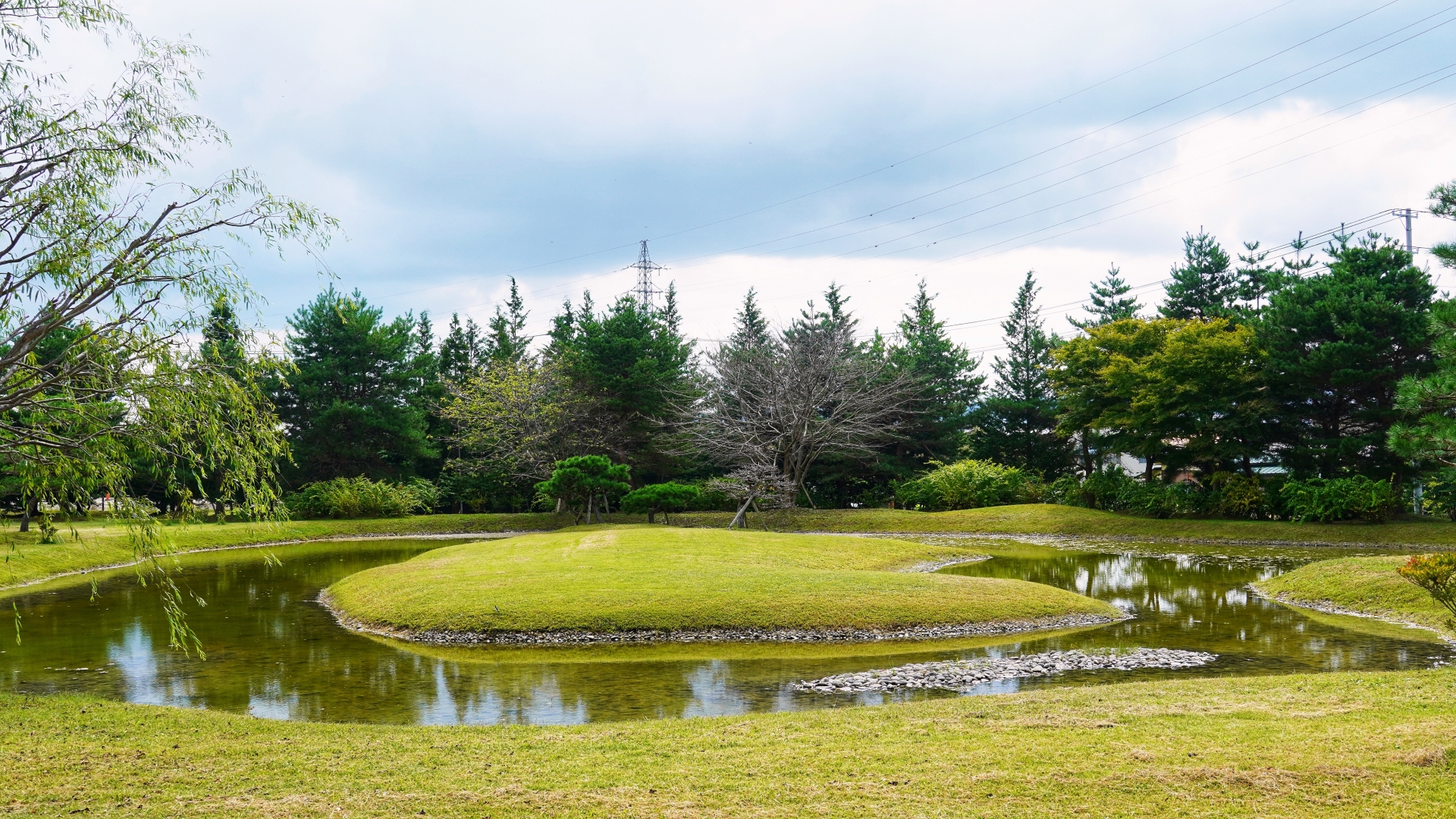
Located in Hiraizumi, Iwate Prefecture, the Yanaginogosho Site is a historically significant archaeological site believed to be the residence of the Fujiwara clan leaders, Fujiwara no Kiyohira and Motohira, during the 12th century. This area, stretching from the base of Takadate along the terraces of the Kitakami River, has long been steeped in the lore of ancient Japan.
The site gained national attention and was designated a National Historic Site in 1997, following six years of emergency excavations that began in 1988 due to the Ichinoseki flood control project. These excavations revealed a wealth of artifacts and architectural remnants, suggesting that this might have been the location of the Heian period governmental complex known as “Hiraizumi-kan” as mentioned in the “Azuma Kagami,” a historical record.
The discoveries at Yanaginogosho include high-quality porcelain from China, large ceramic storage jars from the Tokai region, various wooden artifacts, and a large number of “kawarake” (disposable clay plates), indicative of significant ceremonial usage. The site also uncovered fortifications such as moats, fences, and ponds that help paint a vivid picture of the era’s architectural sophistication.
As excavations continued, it became clear that the site was an extraordinarily important cultural and administrative center. The layout of the site includes a central partitioned area believed to be the residence, flanked by other significant structures and surrounded by defensive moats, illustrating a highly organized and fortified compound. This setup reflects the strategic importance and the high status of the Fujiwara clan in the region.
Yanaginogosho is not just significant for its rich historical artifacts but also for its architecture, which includes remnants of large buildings with extensive dimensions and advanced design features for the time, such as covered verandas and extensive road networks within the complex. The site offers insights into the political and cultural life of the Fujiwara clan, who played a crucial role in the development of the region during the late Heian period.
Currently, the site has been transformed into a historical park, where ongoing academic research and restoration work help visitors understand the profound historical significance of this location. The park is easily accessible, located just about a 10-minute drive from the Hiraizumi-Maezawa IC or a 10-minute walk from JR Hiraizumi Station. This accessibility, combined with the park’s rich historical offerings, makes it a must-visit for anyone interested in the history and culture of medieval Japan.
Seki no Ichi Brewery(世嬉の一酒造)
At the foothills of the Ou Mountains, Seki no Ichi Brewery, known for its dedication to traditional sake brewing techniques, crafts exceptional Japanese sake using groundwater that emerges from the mountains and select sake rice. Utilizing the skills of Nanbu toji—masters of brewing recognized for their meticulous approach to ginjo sake—this brewery produces sake with a deep flavor profile using four types of rice: Yamada Nishiki, Gohyakumangoku, Toyonishiki, and Gingin.
Seki no Ichi is committed to creating the best sake that brings joy to people’s lives, a mission encapsulated in the company’s name, which translates to “the best in the world for making people happy.” Despite the traditional roots of their brewing methods, the brewery also feels the need to innovate and adapt to modern times. Following the destruction caused by an earthquake, a new brewing facility was established in 2017 to continue this tradition with a new vision, connecting more deeply with the community and customers.
Located in Hiraizumi, an area rich in cultural history, Seki no Ichi Brewery offers various educational and experiential programs within its premises. Visitors are encouraged to engage their senses fully through brewery tours and tasting sessions, providing a deeper understanding of sake, local culture, and cuisine.
Sake Brewery Night Tour:
Seki no Ichi offers an evening tour starting at 5:30 PM, allowing visitors to explore the brewery’s architecture, history, and literary connections. The tour includes a sake tasting session, and guests can conclude their visit with a meal at the brewery’s restaurant, which serves local cuisine made from ingredients that complement their sake. The tour costs 500 yen, including guide fees and tasting, with an optional package that includes dinner for 2500 yen.
Beer Factory Tour & Tasting:
At Iwate Kura Beer, part of Seki no Ichi’s operations, visitors can experience the craft beer process firsthand. The tour aims to educate about the ingredients and the brewing process, ending with a beer tasting (note: tasting is for those over 20 years old and not driving; children can taste malt juice). The tour costs 550 yen, or 1650 yen with tasting included.
Beer Brewing Experience:
Iwate Kura Beer also offers an opportunity for visitors to brew their own unique beer. Starting with batches as small as 100 liters (approximately 300 bottles of 330ml each), guests can create custom brews for special occasions like weddings or corporate events. This personalized brewing session is available by appointment.
Seki no Ichi continues to blend tradition with innovation, inviting everyone to explore the art of sake and craft beer making amidst the scenic backdrop of Hiraizumi. Whether you’re a sake enthusiast or a curious traveler, a visit to this brewery promises a rich and rewarding experience.
This area of Iwate offers a unique opportunity to explore Japan’s proud heritage at World Heritage sites while being surrounded by breathtaking natural scenery. Whether you’re walking through ancient temple grounds or cruising down a serene river gorge, Oshu-Hiraizumi-Ichinoseki is an enriching experience for every traveler.
